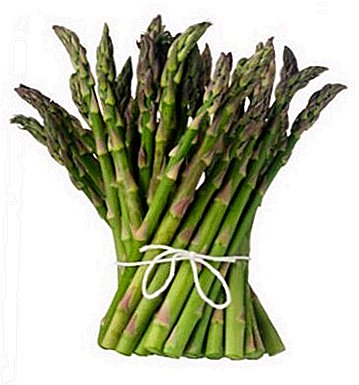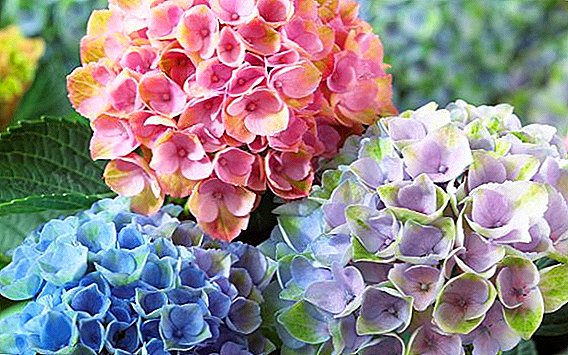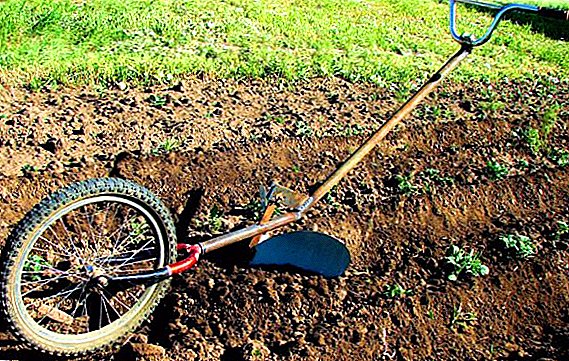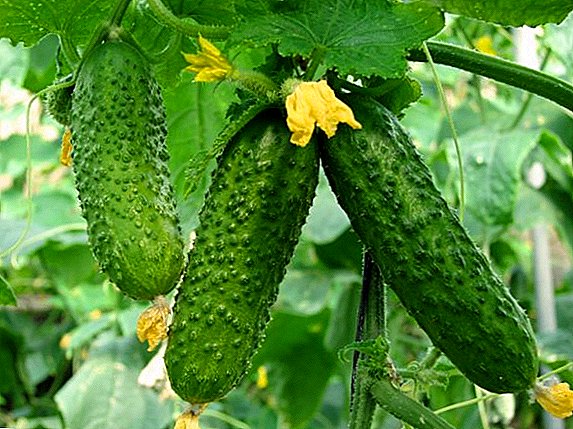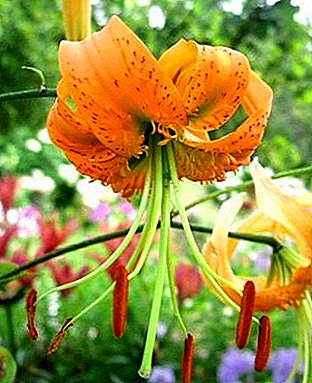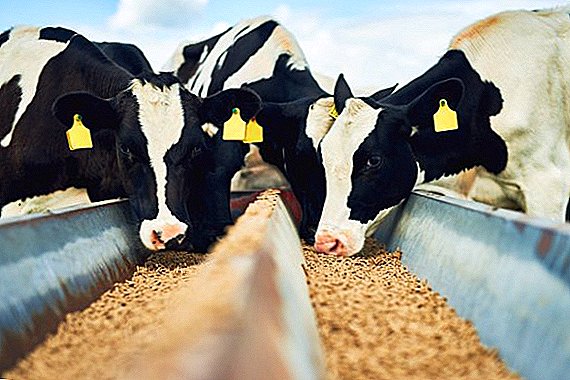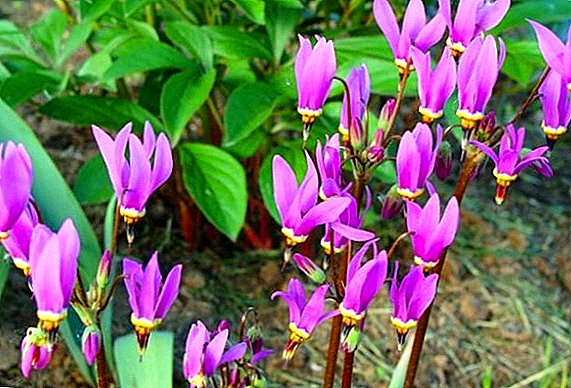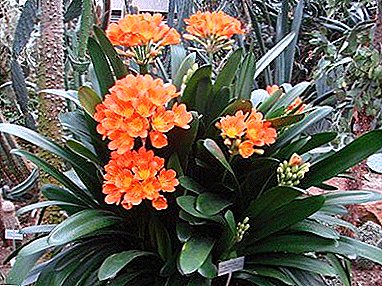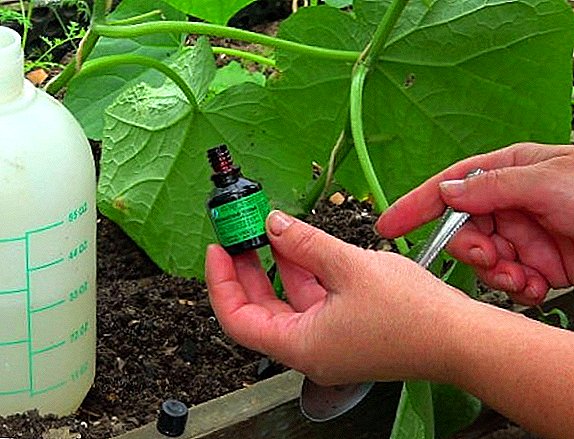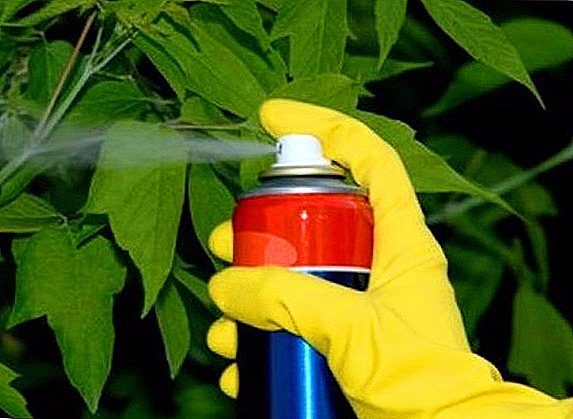 In the arsenal of each experienced grower and gardener there are fungicidal preparations in the form of an emulsion, powder or suspension. In the fight against fungal diseases of plants, they are simply irreplaceable. On sale you can find similar agrochemistry of different types of exposure. Consider the most popular fungicides for indoor plants and analyze each name in terms of the sensitivity of pathogenic fungi to it.
In the arsenal of each experienced grower and gardener there are fungicidal preparations in the form of an emulsion, powder or suspension. In the fight against fungal diseases of plants, they are simply irreplaceable. On sale you can find similar agrochemistry of different types of exposure. Consider the most popular fungicides for indoor plants and analyze each name in terms of the sensitivity of pathogenic fungi to it.
Did you know? For the first time, Democritus spoke about the chemical method of treating plants in 470 BC. In his writing, he reflected on the need to spray flowers from powdery mildew with an aqueous extract of olives. And the ancient philosopher Homer advised to use sulfur in the fight against pathogenic microbes and pests.
"Trikhodermin"
The drug is a organic fungicidebased on grain substrate and active soil bacteria Trichoderma lignorum, whose vital activity contributes to the suppression of fungal spores.
"Trichodermin" can cope with 70 types of pathogens of fungal diseases of plants. In particular, such as: seed infections, fusarium, macrosporosis, root rot, phytophthora, rhizoctoniosis.
The tool begins to act on contact with microorganisms, not poisoning the culture. It is characterized by the ability to improve the fertility of the earth, stimulate the nutrition of the roots, and increase the germination of the grains.
Externally, it is a light powder, which comes to be sold in packages of 10 g capacity. To disinfect indoor flowers for root lesions, the contents of the package are diluted in 1 liter of water and moistened with a suspension in a pot. And for the treatment of the aerial parts of the flowerpots, the entire preparation from the bag is dissolved in 5 liters of water. Also "Trichodermin" is recommended for prophylaxis when transplanting plants (a pinch is added to the substrate), when rooting the cuttings of senpoly (slightly poured into water).
The remaining unused solution is better to put in a closed container in the cellar and store no more than 4 weeks. When re-using, wait until the product reaches room temperature.
Important! Disinfection with chemical fungicides of the contact reaction can be carried out before budding, and organic - during the growing season.
"Hamair"
It is a biological fungicide for plants in the garden and in a house containing bacteria called Bacillus subtilis.  They affect the causative agents of fusarium, powdery mildew, gray and white rot, blight, leaf spot, keel, mildew (downy mildew).
They affect the causative agents of fusarium, powdery mildew, gray and white rot, blight, leaf spot, keel, mildew (downy mildew).
Released "Gamar" in the form of tablets. For watering flowering and ornamental crops, 1 tablet must be dissolved in 5 liters of water, and 2 tablets and 1 l of water are needed for spraying. To achieve the desired result, disinfection is repeated throughout the week. three times a day.
Bordeaux liquid
This fungicide is in the list of the most powerful drugs against pathogenic microbes and fungi. It can be purchased in finished form, and you can cook yourself.
To do this, in separate non-metallic containers, you need to fill in with boiling water (not steep) 300 g of quicklime and copper sulphate. Then in each bowl, bring the composition to the desired volume (up to 5 liters) with cold water.
After filtering the mortar through the gauze folded in several layers, slowly add to it the contents of the second dish. The result should be a bright blue 3% mixture with active copper and acid neutralizing lime.
Be careful: non-observance of proportions will harm plants. For example, if you donate lime powder, the flowers after treatment with this remedy will get severe burns. The above ratio of components is intended for volumetric foci of infection. At the initial stages of the disease, it is recommended for vases to prepare Bordeaux liquid in a ratio of 100 g: 100 g: 10 l.
If the solution remains after treatment, it can be stored for 24 hours by adding a teaspoon of sugar (per 10 liters).
Important! To determine the acidity Bordeaux fluid, you can use an iron nail. If, when lowered into the solution, it becomes covered with reddish copper bloom for 5 minutes, the reaction is acidic.
"Zineb"
Pesticide for the treatment of horticultural, fruit and vegetable crops and root crops from root rot, scab, leaf spot, anthracnose, septoria, mildew, late blight, perenosprosis, cerciforose, rust, pyricularosis, keels. Acts on parasites contact and systemic.  Available in the form of a white or yellowish 15% soaking powder with parallel names "DuPont Fungicide A", "Aspor", "Tiudou", "Ditex", "Novozir", "Zineb".
Available in the form of a white or yellowish 15% soaking powder with parallel names "DuPont Fungicide A", "Aspor", "Tiudou", "Ditex", "Novozir", "Zineb".
The fungicide is intended for spraying the aerial parts of plants and affects the pathogens for 2 weeks, does not suppress the reproduction of powdery fungal spores.
To protect your plants from fungal and bacterial diseases, you will be helped by such fungicides as: “Bud”, “Fundazol”, “Skor”, “Topaz”, “Strobe”.Suspension is recommended for the treatment of plants during the flowering period, since it contributes to an increase in the percentage of the ovary formed and the development of the roots.
It interacts well with organochlorine and organophosphorus substances, but it should not be mixed with Bordeaux liquid.
"Alirin"
A biological fungicide designed to combat parasitic fungi and bacteria.  Its main constituents are microorganisms. Bacillus subtiliswhich resist well to causative agents of powdery mildew, late blight, stem and root rot, Alternaria, mildew, anthracnose, rot, septoria, cladosporia, rust.
Its main constituents are microorganisms. Bacillus subtiliswhich resist well to causative agents of powdery mildew, late blight, stem and root rot, Alternaria, mildew, anthracnose, rot, septoria, cladosporia, rust.
It is released in the form of tablets. For the treatment of underground parts of plants, 2 tablets are placed in a bucket of water, and for spraying the stems and branches, 1 l of water and 2 tablets of Alirina are sufficient. For severe infections, it is recommended to repeat disinfection in a week. The maximum number of treatments - 3.
Did you know? In the struggle for the harvest, people experimented with different chemical compounds, treating plants with them. Frenchman Milardé once remarked that after spraying copper sulfate with lime, the vineyard is not affected by mildew. So the discovery happened Bordeaux mixture.
"Agate"
Is a biological product of anti-fungal and antibacterial action. After its use, there is an increase in yield on vegetable crops, an increase in seed germination and the development of a powerful rhizome.
For these qualities, gardeners fell in love with gardeners, but with success it is used as a preventive agent and as a fertilizer gardener.
The active substance "Agatha" are microorganisms. Pseudomonas aureofaciens. The drug goes on sale in 10-gram bottles with fluid paste. The working solution is prepared from the calculation of 3 liters of water per 1 scoop of fungicide. Processing of the pots obtained composition is made three times with a 20-day interval.
"Green Soap"
The tool is intended for the preventive treatment of indoor flowers from damage by pests and pathogens. It is used as one of the components of disinfection mixtures.
Fungicide has a depressant effect on spider mites and other sucking insects, as well as on pathogens of scab, rust, powdery mildew and late blight. For the prevention of conducting spraying 4% Green Soap Solution.
The drug is released in plastic bottles of different capacities. At the bottom of the container, let's say a small residue.
The maximum number of treatments - 3. If we are talking about disinfecting citrus crops, the treatment is planned a week before the fruits are collected.  The solution is prepared depending on the attacking pathogen or pest. For example, a mixture of tobacco tincture and "Green Soap" is used for sucking insects in a ratio of 2 l: 25 g, and when infected with harmful microorganisms, 2 g of copper sulphate is dissolved in 1 l of water and a fungicide is added to the solution.
The solution is prepared depending on the attacking pathogen or pest. For example, a mixture of tobacco tincture and "Green Soap" is used for sucking insects in a ratio of 2 l: 25 g, and when infected with harmful microorganisms, 2 g of copper sulphate is dissolved in 1 l of water and a fungicide is added to the solution.
Important! Before working with fungicides necessarily take care of security, having protected himself with special clothing, rubber shoes, gloves, goggles, headgear, and if necessary, with a respirator.
"Abiga"
This fungicide from the list of pesticides for ornamental, technical, medicinal, fruit, vegetable, flower, and forest plants. 
The active substance of the drug (copper oxychloride) acts on pathogenic fungi and microbes when in contact with them.
Available in the form of an aqueous suspension, poured into vials of 50 g and 12.5 l canisters. Experts celebrate high dispersion active ingredients, which contributes to a uniform distribution on the stems and leaves of indoor plants.
In addition, "Abiga-PIK" is effective as a prophylactic agent, has an effect regardless of temperature conditions. The working solution is prepared by diluting the preparation according to the proportions indicated in the instructions. Suspension residues can be saved for a long period.
"Fitosporin"
On sale there is "Fitosporin-M". It is an organic fungicide used to combat diseases caused by the activity of fungal spores and bacteria.
It is released as a powder, liquid or paste of dark brown color. Among the weighty advantages of the substance is its efficiency, long shelf life and a wide range of actions. Processing can be carried out by foliar and root methods. In addition, it is recommended to use "Fitosporin" for soaking seed, rhizomes of seedlings during planting, protection of flower tubers and bulbs when laying in the cellar for the winter.
Did you know? The history of the use of the drug in 1778 as an insecticide from crude oil and kerosene to fight with a shield on orange trees.
"Albite"
This biological product is also an antidote, fungicide and growth stimulant.
Agronomists recommend it for the restoration of plants after herbicidal stress, prolonged droughts, hailstorms, during various fungal lesions, with poor germination of grains and low yields.  The drug does not have a toxic effect on vases and people. With the aim of preventive and therapeutic measures it is used for root rot, bacteriosis, leaf spot. The active substance "Albit" does not cause addiction in pathogens. Very effective to use for indoor plants.
The drug does not have a toxic effect on vases and people. With the aim of preventive and therapeutic measures it is used for root rot, bacteriosis, leaf spot. The active substance "Albit" does not cause addiction in pathogens. Very effective to use for indoor plants.
The clerodendrum, Kalanchoe Kalandiva, Streptocarpus, Cyperus, Campanula, Achmea, Nolin, Plumeria, Ahihrizon, Scandapsus will become an adornment of your home.For the treatment of clumps, violets, primroses, cyclamen, amaryllis and other plants cultivated in greenhouses, prepare a solution at the rate of 1 ml per bucket of water. Spraying manufacturers recommend to organize at the beginning of flowering with repeat after 14 days. This is due not only to the prevention of the development of microorganisms, but also to the reinforcing effect of flowering and decoration. Flower growers note that after processing house plants acquire brighter color of leaves and petals.
"Albit" can be added when watering vases. To do this, 1-2 ml of the drug is diluted in 10 liters of water. Root processing is carried out in such a way that the tool falls on the foliage of the culture. To soak the seed need 5 ml of fungicide dissolved in 1 liter of water.
Important! Spraying of the fungicides above-ground parts of plants necessarily conduct from the bottom up.
Potassium permanganate
Among agrochemists, this drug is called potassium permanganate, or potassium permanganate.  It is used in many spheres of human activity, and in plant growing it is referred to as fungicidal agents, which are used for moistening seedlings, seedlings and adult cultures during infections with fusarium, black leg and bacteriosis.
It is used in many spheres of human activity, and in plant growing it is referred to as fungicidal agents, which are used for moistening seedlings, seedlings and adult cultures during infections with fusarium, black leg and bacteriosis.
Also, the drug is recommended for soaking seeds and disinfecting garden tools.
Active ingredients of potassium permanganate - manganese and potassium. Getting to the roots, trunk and leaves, they contribute to the rapid growth of flowers and create a reserve of their strength, resistance to attacks of diseases and pests.  To process the grains, it is enough to dip the material into a solution of 0.5 g of potassium permanganate and 100 ml of water for 20 minutes. After the procedure, the grain must be washed with clean water and dried.
To process the grains, it is enough to dip the material into a solution of 0.5 g of potassium permanganate and 100 ml of water for 20 minutes. After the procedure, the grain must be washed with clean water and dried.
To disinfect the soil from nematodes and various bacteria, fungi that provoke the appearance of black legs and phytophtoras, 5 g of potassium permanganate crystals in 10 liters of water should be diluted. And for feeding plants suitable solution of 3 g of the substance and 10 liters of water.  To save foliage from powdery mildew, 3 g of potassium permanganate is dissolved in 1 bucket of water and 50 g of potassium nitrate is added to it. Prepared by means of spraying the aerial parts of crops.
To save foliage from powdery mildew, 3 g of potassium permanganate is dissolved in 1 bucket of water and 50 g of potassium nitrate is added to it. Prepared by means of spraying the aerial parts of crops.


